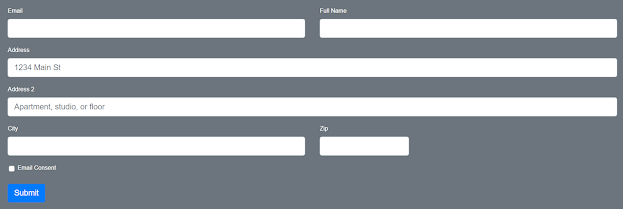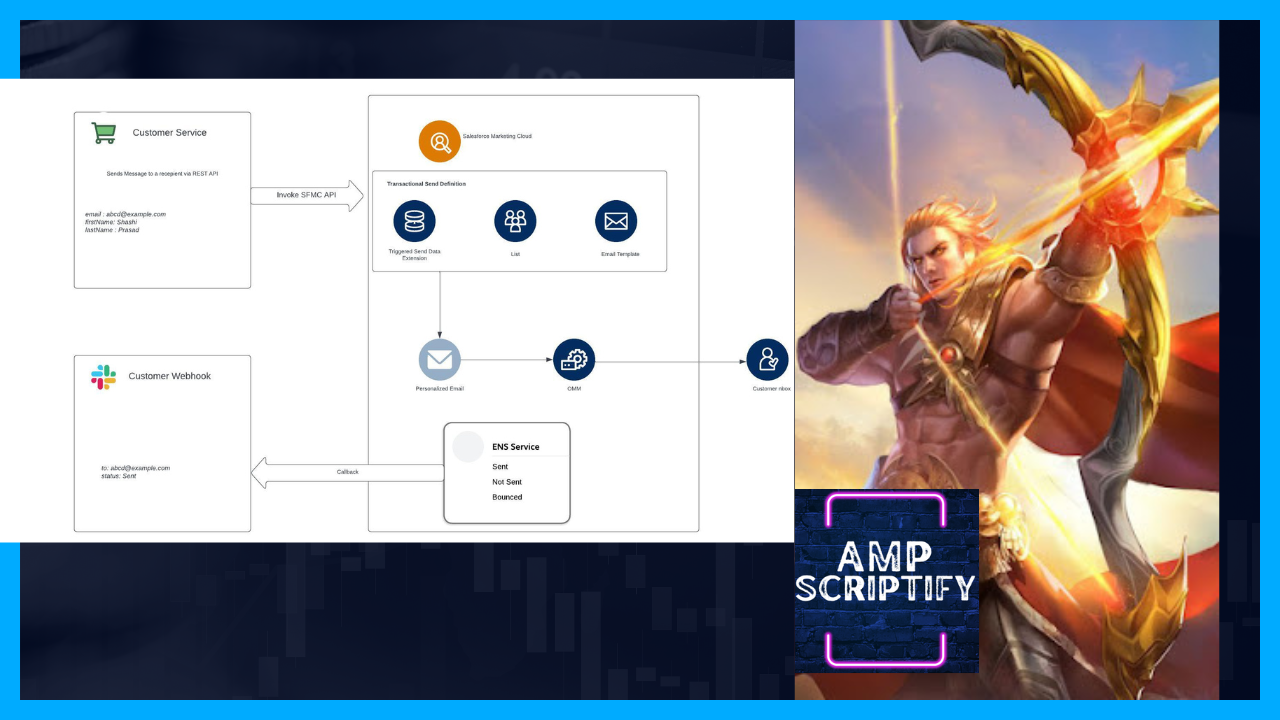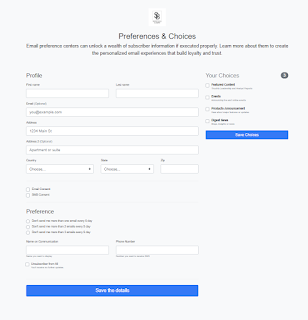CONSIDERATIONS FOR JOURNEY BUILDER
WHAT HAPPENS WHEN YOU SEND AN EMAIL
OUTBOUND MAIL MANAGEMENT GETS INVOKED BY MARKETING CLOUD , OMM IS NOT IN OUR CONTROL BUT LETS GO THROUGH BEHIND THE SCENE ACTIONS.
1. OOM PREPARES DATABASE FOR THE JOBS, OOM ANALYZES THE EMAIL, WHETHER IT'S A TEMPLATE BASED EMAIL OR HTML, WHETHER EMAILS CONTAINS PERSONALIZATIONS OR DYANMIC CONTNETS.
2. OOM STRUCTURES THE EMAIL BASED ON HEADER , BODY AND FOOTER. OOM RETRIEVES THE SUBJECT LINE , BODY CONTENT , AMPSCRIPT IN THE EMAIL AND INTERPRETS THE AMPSCRIPT AND RETIRVES IMAGES.
3. BASED ON THE DATABASE AND STRUCUTRE MAINATAINED BY THE OOM, IT DETERMINES THE CONTENT FOR THE SUBSCRIBERS AND PROCESSES TO MAINTAIN THE PLACEHOLDERS FOR EACH SUBSCRIBERS.
4. OOM HAS PLACED THE PROCESSES IN THE QUEUE, OOM BUNDLES EMAILS IN 500 BATCHES AND SEND TO SUBSCRIBERS INBOX.
NOW WE HAVE THE BACKGROUD , WHAT ARE THE CONSIDERATIONS FOR BUILDING A JOURNEY
JOURNEY PERFORMANCE ARE BASED ON :
1. DATA MODEL
2. FILTERS
3. JOURNEY CONFIGURATIONS
4. ACTIVITIES
5. CONTENT COMPLEXITY
DATA MODEL
CREATE A FILTERED SENDABLE DATA EXTENSION INSTEAD OF USING THE MASTER DATA EXTENSIONS , IF YOU ARE USING THE SAME DATA EXTENSION IN MULTIPLE JOURNEY, IT AFFECTS SEND LOGGING , IMPORT , EXPORT AND REPORT ACTIVITIES.
USE SQL QUERY ACTIVITY TO SEGMENT THE TARGET DATA EXTENSIONS INSTEAD OF FILTETING AT THE ENTRY SOURCE, IF YOU FILTER AT THE ENTRY SOURCE, IT WILL BE UTLILIZING CRITICAL RESOURCES FOR COMPUTING AND EXCESSIVE RESOURCE USAGE, WHICH MIGHT ALSO LED TO STOPPING OF JOURNEY SENDS.
PLAN YOUR DECISION SPLIT IN ADVANCE AND ADD THOSE ATTRIBUTES IN THE ENRTY SOURCE TO UTLIZE THEM IN DECISION SPLIT, AVOID USING CONTACT DATA FOR YOUR DECISION SPLITS.
FILTERS
AVOID USING CONTAINS OPERATORS INSTEAD USE EQUALS OPERATOR . COMPLEX FILTERS FOR ENTRY SOURCE AND DECISION SPLITS REQUIRES JOIN OPERATIONS BETWEEN MULTIPLE TABLES WHICH SLOW THE PERFORMNACE.
JOURNEY CONFIGURATION AND ACTIVITIES
JOURNEY PROCESSES IN JOURNEY SEGMENTS, A SENGMENT CONSISTS OF A CHAIN OF ACTIVITES FROM FIRST ACTIVITY TO FIRST WAIT ACTIVITY, BETWEEN TWO WAIT ACTIVITIES AND FINAL WAIT TO END.
THE MINIMUM PROCESSING SPEEDS OF THE SEGMENT DEPENDS UPON THE PROCESSING SPEED OF EACH ACTIVITY IN THE SEGMENTS. EACH ACTIVITY TYPE PROCESSES CONTACTS AT DIFFERNET RATES.
DON'T ADD WAIT ACTIVITY AT THE FIRST STEP AND DONT ADD WAIT WHICH IS LESS THAN 5 MINUTES. THE LAST WAIT BEFORE END SHOULD BE MARKED LESS THAN 5 MINUTES, SPECIALLY 1 MINUTES BECAUSE 1 MINUTES WAIT ARE IGNORED BY JOURNEY BUILDER.
LIMIT THE NUMBER OF ACTIVITES TO 150-200 ACTIVITIES TO PREVENT SLOW DATA LOAD.
JOURNEY BUILDER PROCESSES IN BATCHES, BUILT SERIES OF DECISION SPLITS TO REDUCE THE BATCH SIZE, WITH THE LARGEST BATCH FOLLOWING THE FIRST.
CONTENT COMPLEXITY
CONTENT COMPLEXITY ARE BASED ON CONTETN PERSONALIZATION
1. STATIC
SINGLE HTML-BASED CONTENT WITH STATIC PERSONALIZATION
2. SIMPLE
PERSONALIZATION WITH SUBSTITUION WITH 9 SUBSTITUTIONS
3. MODERATE
CONTETN BLOCK BASED ON HTML WITH 3 CONTENT BLOCK REFERENCES
12 DYNAMIC SUBSTITUTION BY EXTENSION ON LOOKUP
PERSONALIZATION WITH SUBSTITUION WITH 9 SUBSTITUTIONS
4. ADVANCED
CONTETN BLOCK BASED ON HTML WITH 5 CONTENT BLOCK REFERENCES
24 DYNAMIC SUBSTITUTION BY EXTENSION ON LOOKUP
PERSONALIZATION WITH SUBSTITUION WITH 9 SUBSTITUTIONS
Highly personalized message content that has advanced complexity can reduce send throughput by up to 25%. Personalization is a powerful tool to achieve targeted communication with your audience, but make sure to note how it affects your journey’s send throughput.
BEST PRACTICE FOR EMAIL SENDS
CAN-SPAM ACT
CAN-SPAM is the popular name for the U.S. law regulating commercial email that went into effect on January 1, 2004, the Controlling the Assault of Non-Solicited Pornography and Marketing Act of 2003.
Recommendation for compliance:
- Manage unsubscribes within 10 days of a send and enforce them across your entire enterprise.
- Always capture opt-in or affirmative consent to remove labeling requirements.
- Ensure that subject lines are not deceptive or misleading.
SPAM FILTERS
Most ISPs use filters to sort the legitimate email from junk or spam for their users. More than 300 spam-filtering companies exist and vary significantly in their filter logic. Most common spam filters attempt to filter those sending unwanted email based on sending reputation and deliverability statistics, meaning that it is important that your mail is easily identifiable as being wanted and not being unsolicited. Elevated bounce rates, elevated complaint rates, or low open rates are all indicators that recipients may find your mail to be unwanted, and ISP spam folders are more likely to consider your mail as spam as a result.
BOUNCE RATE
Proactively remove your bounced addresses before your next send. Though the application automatically holds undeliverable emails after the third bounce, a bounce rate over 20% can dramatically harm your deliverability and ISP reputation.
REMOVE OLD OR INACTIVE SUBSCRIBERS
Do you have names that you haven't mailed to in six months? How about customers that haven't opened an email or clicked a link in that same time period? These are indications to purge these old or inactive addresses. These customers cost money to mail, reduce your ROI, and are more likely to complain.
Run the Unengaged Subscribers for a List Report to view which subscribers haven't opened or clicked through your emails during a certain time period.
You can also run the Subscriber Engagement Report to pull information into a third-party program, like Microsoft Access, to query emails not clicked or opened.







Comments
Post a Comment